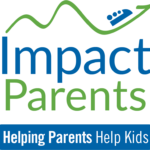Turning Around Toxic Intensity

I did not know what ADHD was, or that it was the likely cause of my forgetfulness, my being “scattered, smothered, and covered,” until I was an adult. I did not understand how my untreated ADHD had contributed to unfulfilled dreams, challenged relationships, problems with finances, and issues with addiction.
Creating Intensity
I struggle with an addiction to toxic intensity – the Mother of All Addictions.
Toxic intensity is the term I use for the angst and drama we create for ourselves and others. It is an addiction that is common among many of us with ADHD. It is also common among Adult Children of Alcoholics, but that is another topic.
People with ADHD often create intensity as a form of self-medication. A crisis can produce the adrenaline we “need” to focus and succeed at something, even if the newly “ginned-up” intensity only serves to help us get out of the trouble we've just created. We also create intensity to divert our attention from what really matters: the sometimes-boring option of simply taking care of ourselves and our families.
This intensity can be incredibly addictive. It is especially risky for people with ADHD, who are at risk of addiction and are more likely than others to self-medicate with alcohol and other substances, or behaviors that change our body chemistry.
Since I grew up in an intense, violent, alcoholic home – looking back, it is likely that undiagnosed ADHD can account for many of my father's addictive behaviors – my addiction to toxic intensity came naturally. It wreaked havoc for many years.
Article continues below...
Minimize Meltdowns!
Download a free tipsheet "Top 10 Ways to Stop Meltdowns in Their Tracks" to stop yelling and tantrums from everyone!
Stopping the Cycle
Thank God having children helped me see, and want to stop, the cycle.
Stopping multigenerational addiction isn't easy. When there is a high level of toxic intensity in a home, children are likely to try to recreate it with self-destructive behaviors. People unconsciously recreate what they know from childhood, even if it is bad. We naturally find comfort in the known.
If children hear arguing and verbal abuse, they become accustomed to it. Later, when they get into relationships of any kind (friendships, romantic relationships, work), they may attract someone who is toxic for them, unaware that they are being abused or abusing the people they love the most.
Toxic intensity can be created with violence, addiction, gossip, abuse, money mismanagement, rushing, obsessive thinking, overwork, or any other destructive, compulsive behavior. Being addicted to it is a challenging, adrenaline-filled habit. Breaking this addiction takes work in self-care, in setting and keeping boundaries, and in coming to love peaceful times.
Breaking this addiction is particularly difficult for someone with ADHD. After all, adrenaline-producing anxiety attacks can been our friend, helping us to push through to complete work and meet commitments.
Turning Around Toxic Intensity
I've done everything I could think of to face and overcome my addiction to toxic intensity. Many support systems have guided me over the years, including a parenting coach, therapy, support groups, books, medication, spirituality, and writing a book – the one that I needed myself. Over time – and with a lot of support – I've learned to practice peace, poise, and patience.
Early on in the process, I worked with a parenting expert who warned that intense, perfectionist parents were likely to have children who mirrored their parents' unforgiving behaviors. He explained that their children were likely to be even harder on themselves than their parent role models. That certainly spoke to me! I did not want that for my children.
About that same time, I started attending a support group for families and friends of alcoholics. All of these pieces were lining up to help me see that I had become tightly-wound. More than anything, I wanted to stop the insanity, and not let my pain hurt my children.
A final piece in the puzzle was my ADHD diagnosis. Suddenly, so much made sense! Why I daydreamed. Why I could not focus in high school (depression was part of it, but what else was going on? I'd made good grades before…). Why I was drawn to intense relationships. Why I was attracted to high-pressure work requiring a tremendous amount of focus and creativity. Why I put so much pressure on myself.
I knew I did not want to put that kind of pressure on my precious children. So, in addition to everything else I was doing to break the cycle, I tried medication. An antidepressant cleared much of the fog. The addition of a neuro-stimulant and B vitamins led to an almost audible click in my brain. Suddenly I could connect the dots to better figure out the logistics and resources required to be the working single mom of two active children.
It Takes a Multi-Pronged Approach
A parenting coach, therapy, support groups, medication, spirituality, writing a book – it took a combined approach to help me learn, at the cellular level, how to overcome the impatience and intolerance I had for myself. I learned to be more patient and tolerant for, and with, my children.
In other words, to get the results I wanted for my children, I had to focus on myself.
There is no question that the investment was worth it. The coaching and therapy, the medication, the dedication to learning what I needed to do for myself and my children – the combination of these approaches – made it possible for me to establish healthy relationships with my children. Nurturing those relationships through the years – with love and discipline given by a mom who learned to love herself – has led us to be accepting and honest with each other. With my children now adults on their own, and the three of us close in healthy, boundaried ways, I am grateful beyond measure for the support I had and the work we've done.
If you're looking for support in managing Risky Behaviors or Snarky Attitudes, email TheTeam@ImpactParents.com to find out about our topic-specific coaching groups.

